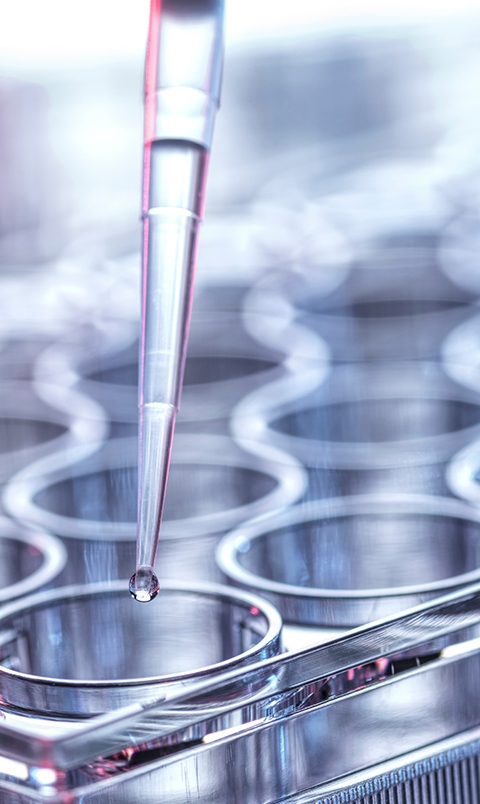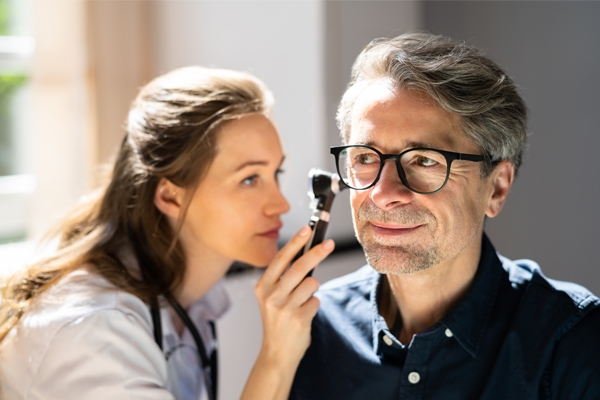Exploring Regenerative Therapy for Hearing Loss


Exploring Regenerative Therapy for Hearing Loss
5 min
Published October 30, 2024
Scientists at Frequency Therapeutics, a spinout of MIT have unveiled a new drug trial that they believe has the potential to reverse hearing loss.
Every year, hearing loss affects hundreds of millions of people worldwide. And although hearing assistance technology such as surgical implants and prescription hearing aids have evolved in leaps and bounds, there's still no true cure. Outside of a few exceptionally rare cases, hearing loss is incurable and irreversible.
But that may soon change.
At the time of writing, there are a great many promising hearing loss treatments either undergoing clinical trials or in their experimental phase. Stem cell therapy shows great promise in its capacity to regrow damaged cells of the inner ear.
Gene editing experiments have shown similar potential.
Now, there's another experimental treatment joining the ranks of those that are worth watching. Frequency Therapeutics, a biotechnology company spun out from the Massachusetts Institute of Technology, is working on a new kind of regenerative therapy for reversing hearing loss. How it works is equal parts simple and fascinating.
To explain it, we'll need to quickly talk about stem cells and progenitor cells.
As noted by Technology Networks, every cell in the human body originates from stem cells, which are capable of limitless replication through a process known as self-renewal. This is fairly common knowledge by this point. What you may not know, however, is that there are two types of stem cells.
Embryonic stem cells are basically living blueprints responsible for creating every other cell in the human body during pregnancy. Meanwhile, adult stem cells can only divide into a certain lineage, such as blood cells or skin cells. There's also a third type of stem cell, a middle ground between the two—the progenitor cell.
Progenitor cells can self-renew, though not to the same extent as stem cells. They're also slightly less potent than embryonic stem cells, although still more potent than adult stem cells. Frequency Therapeutics' new treatment specifically targets progenitor cells.
Taking the form of an injectable drug, it reprograms progenitor cells in the inner ear, activating them so that they regrow stereocilia. Microscopic hair cells situated in the inner ear, the stereocilia play a critical role in the hearing process. They translate the motion of fluid within the cochlear organ to impulses that are then carried to the brain by the auditory nerve.
Because the stereocilia are so sensitive to sound, they're also easily damaged by exposure to loud noise. And even undamaged stereocilia tend to degrade over time, eventually losing their capacity to transmit impulses. The core problem is that, unlike other cells in the human body, stereocilia do not regenerate—once they're gone, they're gone for good.
And that's precisely what makes this treatment so promising—especially because clinical trials have already shown results. Thus far, the firm has injected the treatment in more than 200 patients. Nearly every single one has experienced what the company referred to as 'clinically meaningful improvements' in speech perception across three separate studies.
Frequency recruited for a 124-person clinical trial which showed its preliminary results in 2023. “Hearing is such an important sense; it connects people to their community and cultivates a sense of identity,” Harvard-MIT Health Sciences and Technology affiliate faculty member Jeff Karp told MIT News. "I think the potential to restore hearing will have an enormous impact on society.”
“I wouldn't be surprised if in 10 or 15 years, because of the resources being put into this space and the incredible science being done, we can get to the point where [reversing hearing loss] would be similar to Lasik surgery, where you're in and out in an hour or two and you can completely restore your vision,” he continued. “I think we'll see the same thing for hearing loss.”
It's also worth noting that progenitor cells occur in more than just the ear. They're present all throughout the human body. That means that if this treatment continues to show promise in reversing hearing loss, we could see it adapted to treat a broad range of other conditions, as well.
For years, the world has viewed hearing loss as something of an inevitability. A consequence of aging or of working in certain industries. The idea that it might one day not only be reversible but easy to treat in addition to that is incredibly exciting.
Before long, permanent hearing loss may well become a thing of the past.




